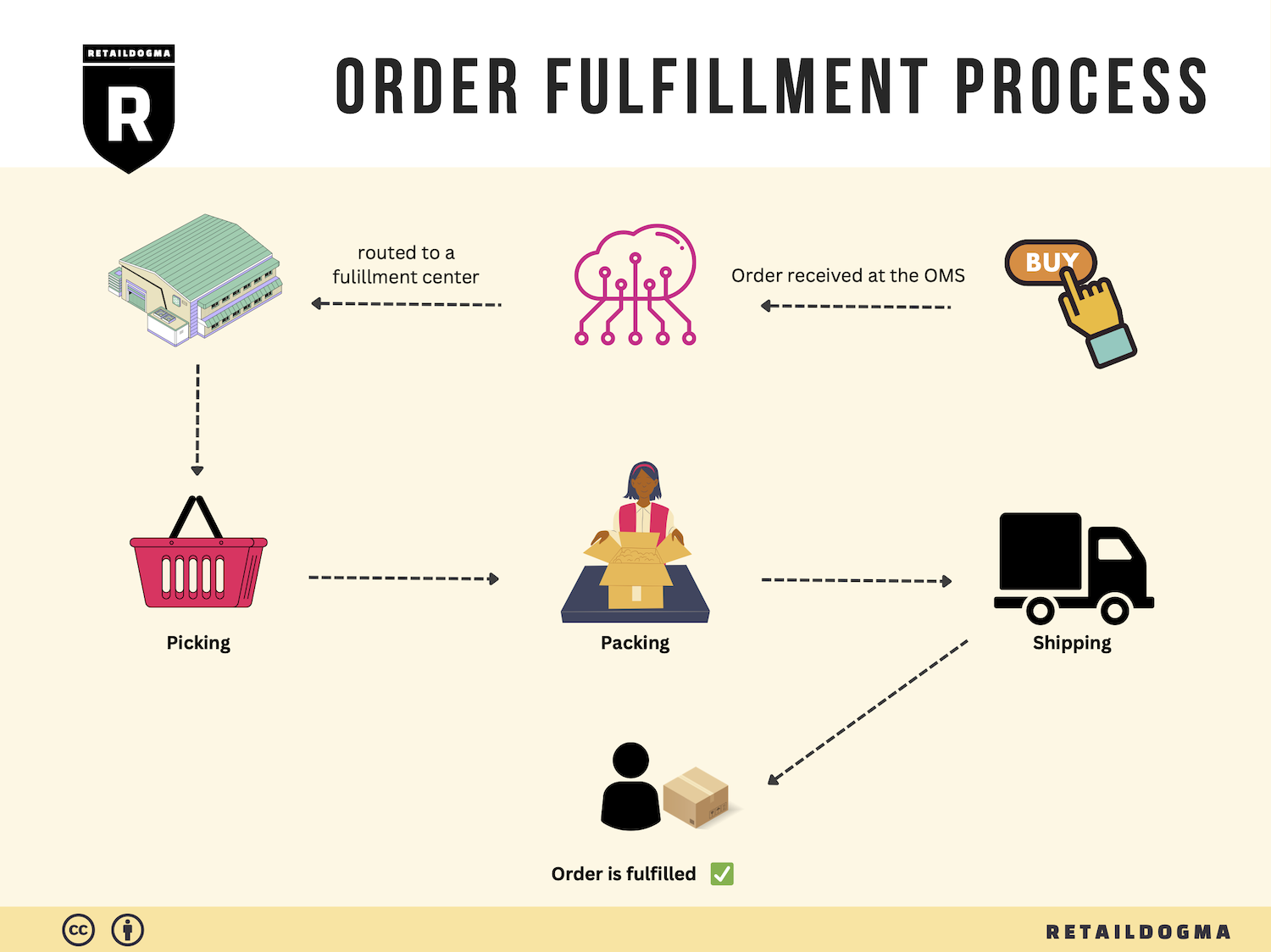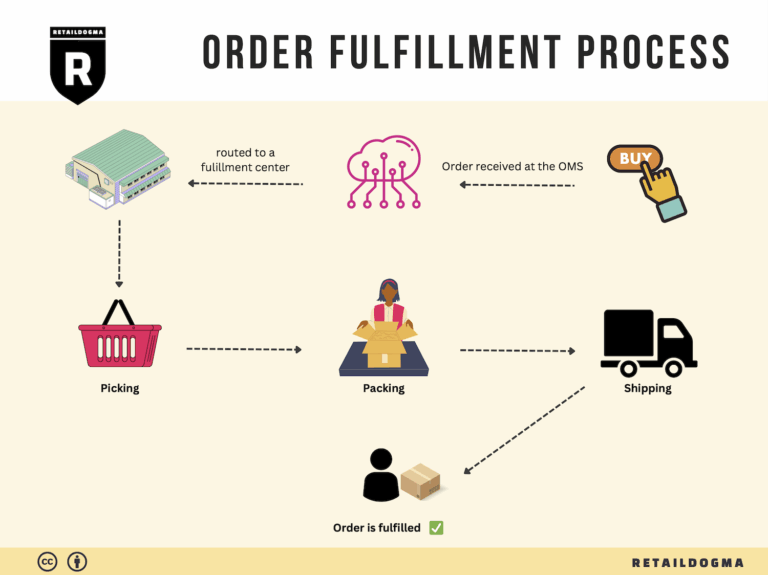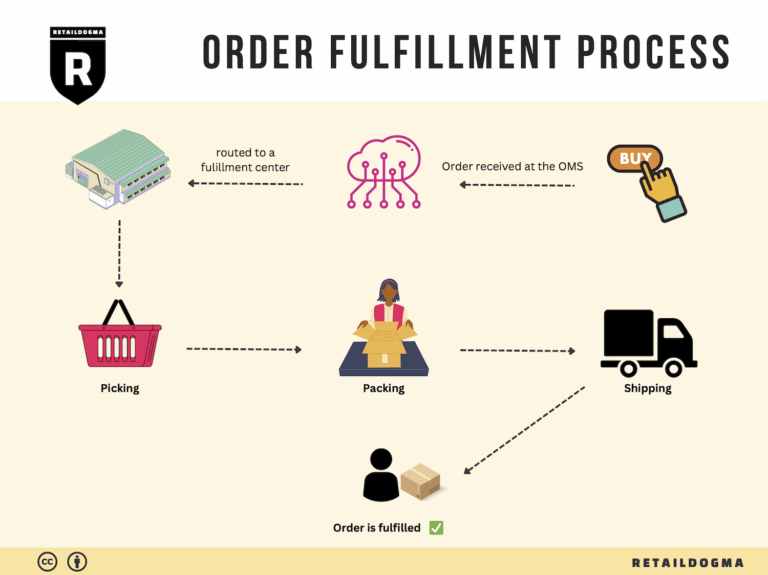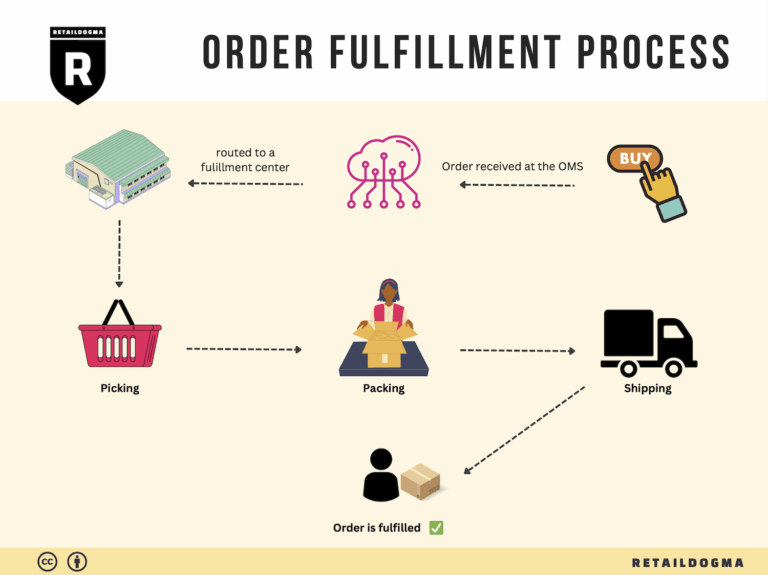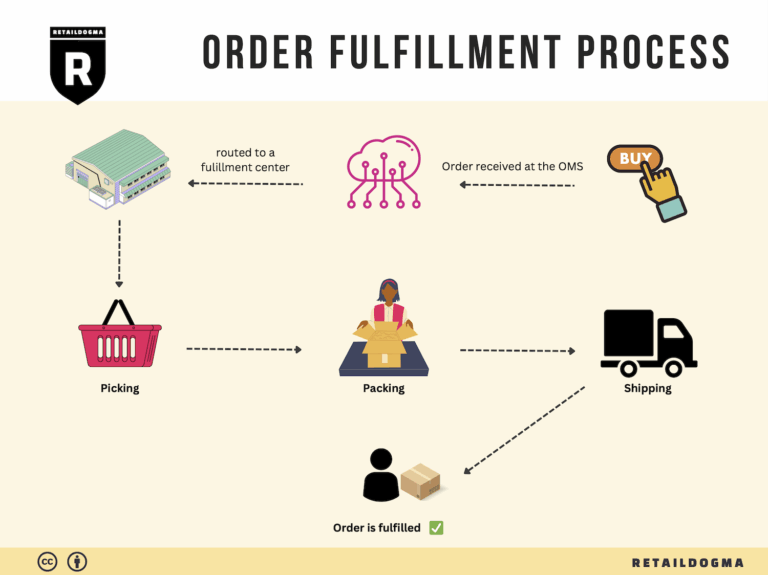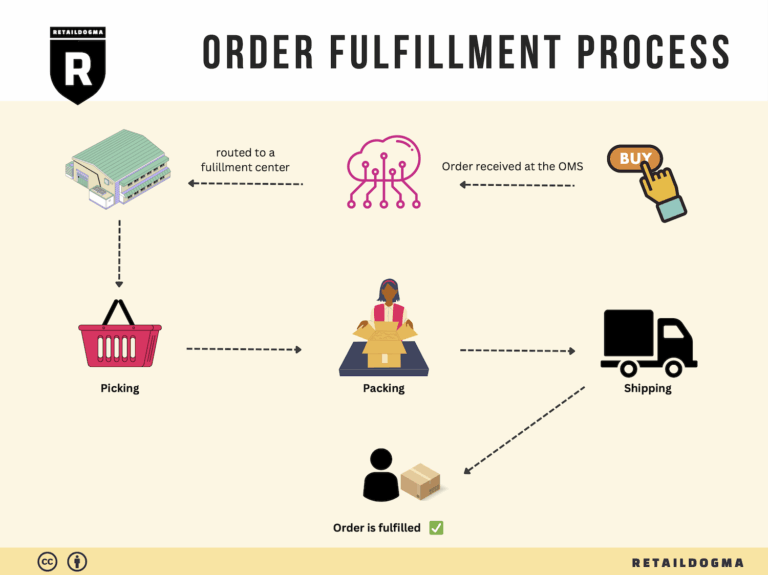Ecommerce Fulfillment Services: The Ultimate Guide (2025)
What is E-commerce Fulfillment? An Introduction for Growing Businesses
Running an online business is exhilarating, but it often comes with its share of challenges. One of the most common pain points for growing e-commerce businesses is the overwhelming task of packing and shipping orders. As sales increase, so does the complexity of logistics. Many entrepreneurs find themselves bogged down with the minutiae of fulfillment, which can detract from their focus on growth and innovation.
Understanding E-commerce Fulfillment
At its core, e-commerce fulfillment is the process of getting a product from your inventory to your customer’s doorstep. This process encompasses several critical components, including order processing, inventory management, packing, shipping, and handling returns. Each step plays a vital role in ensuring customer satisfaction and operational efficiency. As your business scales, understanding and optimizing these processes becomes increasingly important.
What This Guide Will Cover
This comprehensive guide aims to demystify e-commerce fulfillment for business owners, operations managers, and entrepreneurs looking to streamline their logistics. We will explore various fulfillment models, such as Third-Party Logistics (3PL) and Fulfillment by Amazon (FBA), detailing their respective advantages and potential drawbacks. Each model offers unique benefits that can cater to different business needs and growth strategies.
We will also delve into the core services that fulfillment partners typically provide, including:
- Pick and Pack Services: How items are selected from inventory and prepared for shipment.
- Warehousing: The importance of secure storage for your products.
- Shipping Solutions: Understanding your options for domestic and international delivery.
- Returns Management: Efficiently handling returns to maintain customer satisfaction and inventory accuracy.
Choosing the right fulfillment partner is crucial for scaling your business efficiently. This guide will provide insights into evaluating potential partners based on key criteria such as service offerings, technological capabilities, and customer support.
Additionally, we will cover pricing structures and what to expect in terms of costs associated with different fulfillment models. Understanding these financial aspects is essential for making informed decisions that align with your business goals.
Empowering Smart Logistics Decisions
Ultimately, the goal of this guide is to empower you with the knowledge needed to make smart decisions about your logistics strategy. By understanding the intricacies of e-commerce fulfillment, you can position your business for sustainable growth, ensuring that your logistics operations are not just a burden, but a seamless extension of your brand.
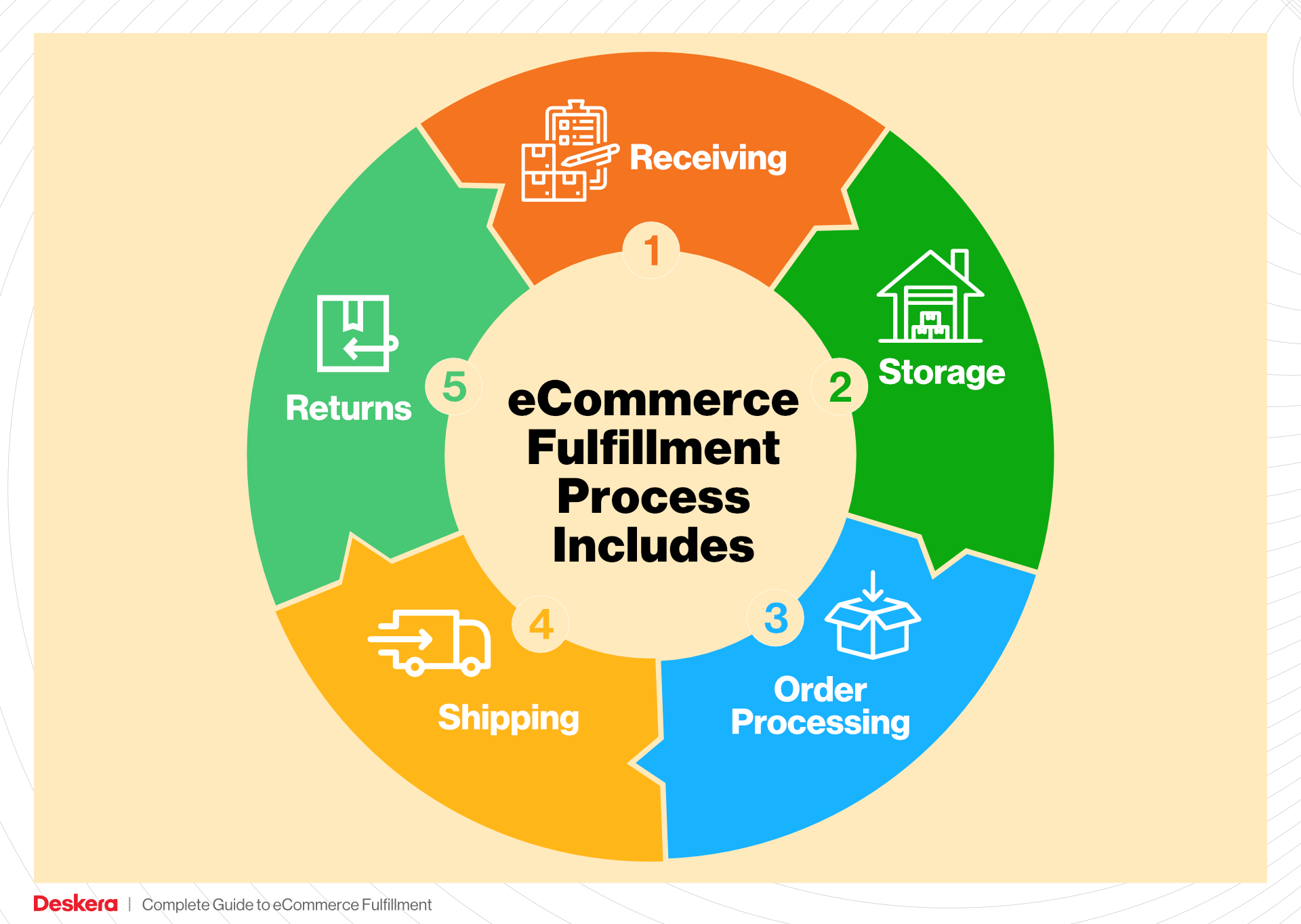
What You’ll Learn In This Guide
- What is E-commerce Fulfillment? An Introduction for Growing Businesses
- The Order Fulfillment Process: From ‘Buy’ Button to Customer’s Door
- Comparing Fulfillment Models: In-House vs. 3PL vs. Dropshipping
- A Deep Dive into Amazon FBA: Pros, Cons, and Who It’s For
- Core Services Offered by Fulfillment Centers
- How to Choose a Fulfillment Partner: A 6-Point Checklist
- Understanding Fulfillment Pricing: A Breakdown of Common Fees
- Frequently Asked Questions (FAQs) about Fulfillment
- Conclusion: Is Outsourcing Fulfillment the Right Move for Your Business?
- Important Disclaimer
The Order Fulfillment Process: From ‘Buy’ Button to Customer’s Door
1. Receiving Inventory
The order fulfillment process begins with receiving inventory, a crucial step where products arrive at your warehouse from suppliers or manufacturers. During this phase, items are checked against purchase orders to ensure accuracy in quantity and specifications. The process often involves scanning items to generate a Stock Keeping Unit (SKU), a unique identifier that helps in tracking inventory.
This step is vital for several reasons. First, accurate receiving prevents stock discrepancies that could lead to fulfillment delays or customer dissatisfaction. Second, effective inventory management starts here; by properly logging incoming products, businesses can maintain a clear picture of stock levels. Additionally, implementing a robust receiving system minimizes human error, which is essential for maintaining operational efficiency.
2. Warehouse Storage
Once inventory is received and verified, the next step is warehouse storage. This involves placing products in designated areas within the warehouse that maximize space and facilitate easy access. Efficient storage strategies often utilize techniques like slotting, where items are organized based on their sales velocity and size.
Effective warehouse storage is important for several reasons. First, it directly impacts order picking efficiency; well-organized inventory allows staff to locate products quickly, reducing order processing time. Second, optimal storage helps in managing inventory turnover, ensuring that older stock is sold before it becomes obsolete. Furthermore, good storage practices can reduce the risk of damage or loss, ultimately safeguarding your investment in inventory.
3. Order Picking
The next phase is order picking, where items are selected from storage to fulfill customer orders. This process often uses a pick list, which details the items and quantities needed for each order. Picking can be done using various methods, such as batch picking or wave picking, depending on the volume of orders and warehouse layout.
Order picking is critical because it directly influences fulfillment speed and accuracy. A streamlined picking process reduces the time it takes to fulfill an order, which can enhance customer satisfaction and loyalty. Additionally, accurate picking minimizes returns due to incorrect items being sent, thereby saving costs associated with reverse logistics. Businesses often invest in technology, such as barcode scanners or pick-to-light systems, to improve picking efficiency and accuracy.
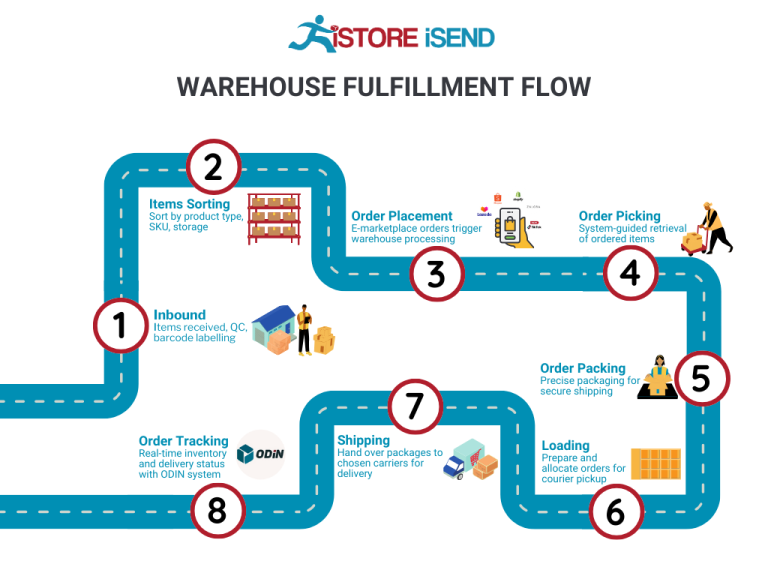
4. Order Packing
After items are picked, they move to the order packing stage. In this step, products are carefully packed for shipment, often using branded packaging that enhances the customer experience. Proper packing involves selecting appropriate materials, ensuring items are secure, and generating shipping labels.
This step is essential for several reasons. First, effective packing protects products during transit, reducing the likelihood of damage and subsequent returns. Second, it provides an opportunity to create a memorable unboxing experience, which can positively impact customer perception and encourage repeat purchases. Additionally, accurate labeling ensures that packages are directed to the correct addresses, facilitating timely delivery. Well-executed packing can also lead to cost savings by optimizing shipping dimensions, which may reduce shipping fees.
5. Shipping & Delivery
The final step in the order fulfillment process is shipping and delivery. Once orders are packed, they are handed over to carriers for transport. Businesses typically partner with reliable shipping providers, such as USPS, UPS, or FedEx, to ensure timely delivery. Tracking systems are often integrated to provide customers with real-time updates on their order status.
Shipping and delivery are crucial for overall customer satisfaction. Fast and reliable shipping can be a competitive advantage, especially in today’s e-commerce environment where consumers expect quick delivery. Additionally, effective shipping management minimizes costs and enhances operational efficiency. By monitoring shipping performance and analyzing metrics such as delivery times and shipping costs, businesses can make informed decisions to optimize their logistics strategy.
In conclusion, understanding and optimizing each step of the order fulfillment process—from receiving inventory to shipping and delivery—enables e-commerce businesses to enhance operational efficiency, reduce costs, and improve customer satisfaction. By investing in technology and best practices, businesses can scale their operations effectively, ensuring they meet growing customer demands.
Comparing Fulfillment Models: In-House vs. 3PL vs. Dropshipping
Fulfillment Model Comparison
| Model | Who Handles Inventory | Best For (Business Stage) | Key Advantage | Key Disadvantage |
|---|---|---|---|---|
| In-House Fulfillment | Business owner/employee | Start-ups to established businesses | Full control over inventory and processes | High overhead costs and resource-intensive |
| Third-Party Logistics (3PL) | 3PL provider | Growth-focused businesses | Scalable operations and reduced shipping costs | Less control over fulfillment processes |
| Dropshipping | Supplier | New businesses or low-budget startups | Low startup costs and minimal inventory risk | Lower profit margins and longer shipping times |
In-House Fulfillment
In-house fulfillment involves managing the entire logistics process within your own business. This means you are responsible for everything from inventory management to order processing, packing, and shipping. For startups and established businesses alike, this model provides a significant level of control over the fulfillment process, allowing you to customize packaging and branding to enhance customer experience. However, the downside is that it requires substantial investment in infrastructure, including warehousing space, technology, and labor. Additionally, as order volumes increase, managing logistics can become resource-intensive, diverting attention away from core business activities like marketing and product development. This model works best for businesses with stable demand and the capacity to invest in their logistics operations.
Third-Party Logistics (3PL)
Third-party logistics (3PL) refers to outsourcing fulfillment operations to a specialized provider. This model is ideal for growth-focused businesses looking to scale without the burden of managing logistics in-house. 3PL providers handle everything from warehousing to shipping, often leveraging established relationships with carriers to secure lower shipping rates and faster delivery times. The key advantage of using a 3PL is the ability to scale operations quickly, as these providers can easily accommodate fluctuations in order volume. Additionally, many 3PLs offer integrated technology solutions that streamline inventory management and order processing. However, the trade-off is a decrease in control over fulfillment processes and potentially higher costs compared to in-house operations, especially if your business has unique requirements that may not align with the 3PL’s standard offerings.
Dropshipping
Dropshipping is a fulfillment model where the retailer does not hold inventory but instead transfers customer orders and shipment details to a supplier, who then ships the products directly to the customer. This model is particularly appealing for new businesses or those with limited budgets, as it eliminates the need for inventory investment and warehousing costs. The primary advantage of dropshipping is the low barrier to entry, allowing entrepreneurs to start selling without a significant upfront investment. However, this model also comes with challenges. Profit margins can be lower due to the reliance on suppliers, and shipping times may be longer, which can affect customer satisfaction. Additionally, the retailer has little control over product quality and fulfillment speed, which can lead to potential issues in brand reputation. Overall, dropshipping suits businesses that prioritize low risk and minimal operational complexity but may struggle to maintain quality and customer loyalty in a competitive market.
Conclusion
Choosing the right fulfillment model is crucial for the success and scalability of your e-commerce business. Each model—In-House Fulfillment, 3PL, and Dropshipping—has its unique advantages and disadvantages, making it essential to align your choice with your business goals, resources, and customer expectations. As you consider these options, weigh factors such as control, cost, scalability, and the customer experience to make an informed decision that will support your growth trajectory.
A Deep Dive into Amazon FBA: Pros, Cons, and Who It’s For
Understanding Fulfillment by Amazon (FBA)
Fulfillment by Amazon (FBA) is a service offered by Amazon that allows sellers to store their products in Amazon’s fulfillment centers. Amazon then takes care of storage, packaging, and shipping of the products directly to customers. This service not only streamlines logistics for sellers but also enhances the shopping experience for customers by leveraging Amazon’s extensive distribution network.
How FBA Works
-
Setting Up Your FBA Account: To use FBA, sellers must first create an Amazon seller account. Once registered, sellers can select which products they want to fulfill through FBA.
-
Shipping Products to Amazon: Sellers prepare their products according to Amazon’s guidelines and ship them to designated fulfillment centers. Amazon provides detailed instructions to ensure compliance with their requirements.
-
Storage and Inventory Management: Once the products are received, they are stored in Amazon’s warehouses. Sellers can track their inventory levels through the Amazon Seller Central dashboard.
-
Order Processing: When a customer places an order for a product fulfilled by FBA, Amazon handles the entire process. This includes picking the item from the warehouse, packing it, and shipping it directly to the customer.
-
Customer Service and Returns: Amazon also manages customer service for these orders, including handling returns and refunds, which can significantly reduce the operational burden on sellers.
Pros of Fulfillment by Amazon (FBA)
-
Prime Eligibility: One of the most significant advantages of using FBA is that products become eligible for Amazon Prime. This attracts millions of Prime members who prefer to shop for items with free two-day shipping, thereby increasing sales potential.
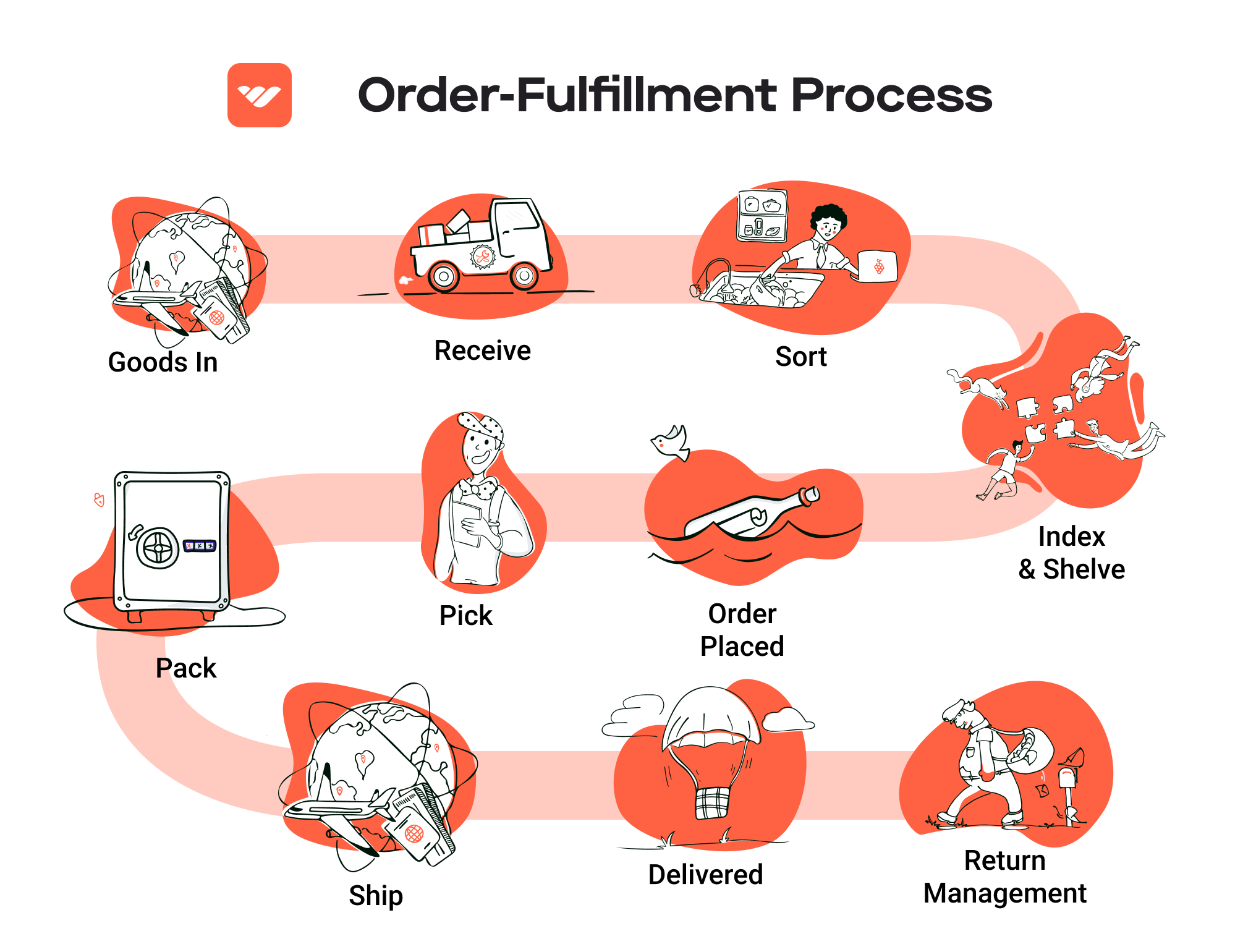
-
Increased Customer Trust: Customers often feel more confident purchasing items fulfilled by Amazon due to the perceived reliability and efficiency of the service. This trust can lead to higher conversion rates and improved customer loyalty.
-
Multi-Channel Fulfillment: FBA allows sellers to fulfill orders not only from Amazon but also from other sales channels such as eBay, Shopify, or their own websites. This multi-channel fulfillment capability helps sellers streamline their logistics and inventory management.
-
Scalability: FBA provides an excellent opportunity for sellers to scale their operations without the need for significant investment in warehouse space or staffing. As sales grow, sellers can easily increase their inventory levels in Amazon’s fulfillment centers.
-
Focus on Core Business: By outsourcing fulfillment to Amazon, sellers can focus more on product development, marketing, and other core aspects of their business rather than getting bogged down with logistics.
Cons of Fulfillment by Amazon (FBA)
-
High Fees: One of the main drawbacks of FBA is the cost structure. Amazon charges various fees, including storage fees for inventory held in their warehouses and fulfillment fees based on the size and weight of each item. These costs can add up quickly, especially for sellers with low margins.
-
Strict Inventory Rules: Amazon has stringent rules regarding inventory management, including guidelines on how products must be packaged and labeled. Failure to comply can result in additional fees or even removal from the platform.
-
Commingling Risks: FBA products are often commingled, meaning that a seller’s inventory can be mixed with that of other sellers. This can lead to complications if customers receive defective or counterfeit items from another seller, potentially damaging the original seller’s reputation.
-
Limited Control Over Shipping: While Amazon handles shipping, sellers have limited control over the shipping process. This lack of control can be problematic if there are delays or issues with delivery that reflect poorly on the seller.
-
Potential for Stockouts: If a seller’s products run out of stock, they can miss out on sales and potentially lose their ranking in search results. This can be particularly detrimental for seasonal products or during peak shopping times.
Who is FBA Best For?
Fulfillment by Amazon is particularly well-suited for:
-
Small to Medium-Sized Businesses: Sellers looking to scale operations without significant upfront investment in logistics and warehousing can benefit immensely from FBA.
-
E-commerce Startups: New businesses that want to leverage Amazon’s credibility and customer base can gain a foothold in the market through FBA.
-
Brands with High Demand Products: Sellers with popular products that are in demand year-round or during peak seasons can take advantage of Amazon’s vast network to meet customer expectations.
-
Sellers with Limited Logistics Expertise: Businesses that lack experience in logistics and fulfillment can benefit from Amazon’s established systems and processes.
-
Multi-Channel Sellers: Those who sell across various platforms and want a streamlined fulfillment process will find FBA’s multi-channel capabilities advantageous.
In conclusion, while Fulfillment by Amazon offers numerous benefits such as Prime eligibility and increased customer trust, it also comes with challenges including high fees and strict inventory management rules. Understanding both sides is essential for e-commerce business owners to make informed decisions about whether FBA aligns with their operational goals and growth strategies.
Core Services Offered by Fulfillment Centers
Inventory Management & Warehousing
Effective inventory management and warehousing are critical components of e-commerce fulfillment services. Fulfillment centers provide businesses with secure storage for their products, utilizing advanced inventory management systems that allow for real-time tracking and monitoring of stock levels. This service ensures that businesses can maintain optimal inventory levels, reducing the risk of stockouts or overstock situations.
The benefit of this service lies in its ability to streamline operations. By leveraging a fulfillment center’s warehousing capabilities, e-commerce businesses can free up valuable space in their own facilities, reduce overhead costs, and minimize the complexities associated with managing inventory. Moreover, advanced inventory management systems often integrate seamlessly with various e-commerce platforms, enabling businesses to automate order processing and inventory updates. This integration not only enhances operational efficiency but also improves customer satisfaction by ensuring that products are readily available for timely delivery.
Pick and Pack Services
Pick and pack services are fundamental to the fulfillment process, where fulfillment centers handle the selection (picking) of products from the warehouse and their subsequent packaging (packing) for shipment. This service is designed to ensure that orders are fulfilled accurately and efficiently, often employing technology to enhance precision and speed.
For e-commerce businesses, the primary advantage of pick and pack services is the significant reduction in order fulfillment time. With trained staff and optimized workflows, fulfillment centers can process orders faster than most in-house teams. Additionally, fulfillment centers often implement quality control measures to minimize errors, ensuring that the right products are shipped to the right customers. This accuracy not only enhances customer trust but also reduces the costs associated with returns and re-shipments, directly impacting a business’s bottom line.
Kitting and Assembly
Kitting and assembly services involve grouping multiple products into a single package or preparing items for sale. This can include assembling components, bundling products together, or creating gift sets, which are particularly popular during holiday seasons or promotional campaigns. Fulfillment centers manage these processes with precision, often allowing businesses to offer unique product offerings without the need for extensive in-house labor.
The benefits of kitting and assembly services are twofold. Firstly, they enable e-commerce businesses to enhance their product offerings, creating bundles or kits that can attract more customers and increase average order value. Secondly, outsourcing these tasks to a fulfillment center allows businesses to focus on core activities such as marketing and product development, rather than getting bogged down with labor-intensive assembly tasks. This strategic delegation can lead to improved operational efficiency and greater overall business agility.
Returns Management (Reverse Logistics)
Returns management, or reverse logistics, is an essential service offered by fulfillment centers that handles the complexities associated with product returns. This process includes receiving returned items, inspecting them, restocking them if they are in sellable condition, or managing their disposal if they are not. A well-organized returns management system can significantly enhance customer satisfaction and loyalty.
The benefit of effective returns management for e-commerce businesses cannot be overstated. A streamlined returns process not only makes it easier for customers to return unwanted or defective products but also provides businesses with valuable insights into product performance and customer preferences. By analyzing return data, companies can identify trends, improve product quality, and adjust their offerings to better meet customer needs. Additionally, efficient returns management minimizes the financial impact of returns on the business, ensuring that inventory is accurately accounted for and that lost sales opportunities are minimized.
Conclusion
In summary, fulfillment centers provide a suite of core services that are vital for e-commerce businesses looking to scale efficiently. From inventory management and warehousing to pick and pack services, kitting and assembly, and returns management, these services are designed to streamline operations, enhance customer satisfaction, and ultimately drive growth. By partnering with a capable fulfillment center, e-commerce businesses can focus on their strategic objectives while benefiting from the expertise and resources of a dedicated logistics provider. This collaboration is essential for navigating the complexities of modern e-commerce and achieving sustainable success in a competitive marketplace.
How to Choose a Fulfillment Partner: A 6-Point Checklist
Location & Warehouse Network
Importance: The geographical location of your fulfillment partner is crucial for efficient shipping and delivery. A strategically located warehouse network can significantly reduce shipping times and costs, impacting customer satisfaction and retention.
Questions to Ask:
– Where are your warehouses located, and how does that affect my shipping times?
– Do you have a network of warehouses that can cover my target markets effectively?
– How do you handle shipping to international locations?
– What shipping carriers do you partner with, and what are their delivery times to my primary customer base?
Technology & Integrations
Importance: In today’s e-commerce landscape, technology plays a vital role in streamlining operations. A fulfillment partner with robust technology can provide real-time inventory management, order tracking, and seamless integration with your existing e-commerce platforms.
Questions to Ask:
– What technology do you use for inventory management and order processing?
– Can your system integrate with my e-commerce platform (e.g., Shopify, WooCommerce)?
– Do you offer real-time tracking for shipments, and how is this communicated to my customers?
– How do you handle data security and privacy?
Specializations (e.g., cold storage, oversized items)
Importance: Depending on your product types, you may need a fulfillment partner with specific capabilities. Whether it’s cold storage for perishable goods or specialized handling for oversized items, ensure your partner can accommodate your unique requirements.
Questions to Ask:
– What types of products do you specialize in handling?
– Do you have the capability for special storage conditions (e.g., temperature-controlled environments)?
– How do you manage the packing and shipping of oversized or fragile items?
– Can you provide examples of how you’ve successfully handled similar products?
Scalability & Capacity
Importance: As your business grows, your fulfillment partner should be able to scale with you. A partner that can accommodate fluctuating volumes and seasonal spikes will help ensure you can meet customer demand without delays.
Questions to Ask:
– How do you handle fluctuations in order volume, especially during peak seasons?
– What is your current capacity, and how quickly can you scale operations if my sales increase?
– Are there any limits on the volume of orders you can handle?
– How do you manage inventory during periods of rapid growth?
Pricing and Contracts
Importance: Understanding the pricing structure and contract terms is essential for budgeting and financial planning. Transparent pricing without hidden fees will help you manage your costs effectively.
Questions to Ask:
– What is your pricing structure? Are there any setup fees or minimum order requirements?
– How do you charge for storage, picking, packing, and shipping?
– Can you provide a breakdown of all potential costs?
– What are the terms of your contract? Are there options for flexibility or cancellation?
Customer Support & Reviews
Importance: Excellent customer support can make a significant difference in your operational efficiency and overall experience. A responsive partner will help you quickly resolve any issues that arise, ensuring your business runs smoothly.
Questions to Ask:
– What support channels do you offer (e.g., phone, email, chat)?
– How quickly can I expect a response to inquiries or issues?
– Can you provide references or case studies from similar businesses?
– What is your customer satisfaction rate, and how do you handle complaints?
Conclusion
Choosing the right fulfillment partner is a critical step in scaling your e-commerce business. By carefully evaluating potential partners against this checklist, you can ensure that you find a provider that not only meets your current needs but can also grow with you as your business evolves. A strategic partnership with a capable 3PL provider can enhance your operational efficiency, improve customer satisfaction, and ultimately drive your business success.
Understanding Fulfillment Pricing: A Breakdown of Common Fees
Initial Setup Fees
Initial setup fees are charges that some fulfillment providers impose when you first start using their services. These fees can cover various aspects, such as account creation, system integration, and the initial onboarding process. Depending on the 3PL (Third-Party Logistics) provider, these fees may vary significantly.
Providers may charge a flat fee for setup or base it on the complexity of your e-commerce platform integration. For example, if you require custom software adjustments to connect your online store with the fulfillment system, expect higher costs. However, many modern fulfillment services, particularly those targeting small to medium-sized businesses, are moving towards a no-setup-fee model, making it easier for you to get started without a significant upfront investment.
Receiving Fees
Receiving fees are incurred when your inventory arrives at the fulfillment center. This fee covers the labor and resources necessary to unload, inspect, and store your products. The charge can be calculated per pallet or per item, depending on the provider’s policy.
For instance, if your shipment consists of 100 units and the receiving fee is set at $0.50 per item, your total receiving fee would be $50. Some providers may also have minimum charges, meaning that even small shipments can incur a baseline fee. Understanding these fees is crucial, especially if you frequently send inventory in varying quantities.
Storage Fees (per pallet/bin)
Storage fees are charges for warehousing your inventory at the fulfillment center. These fees can be structured in different ways, typically calculated on a monthly basis and charged per pallet or bin occupied.
For example, if your products take up 10 pallets and the storage fee is $20 per pallet each month, your total storage fee would be $200. Additionally, be aware that some fulfillment centers impose long-term storage fees for items that remain in their warehouse for an extended period. This is particularly relevant for e-commerce businesses with seasonal products or slow-moving inventory, as it can significantly impact your overall fulfillment costs.
Pick & Pack Fees (per item/order)
Pick and pack fees are among the most critical costs in the fulfillment process, as they directly affect order fulfillment efficiency. These fees are charged for the labor involved in picking items from storage, packing them for shipment, and preparing them for dispatch.
Typically, these fees are calculated either per item or per order. For instance, if your fulfillment provider charges $1.00 per item and you receive an order for 5 items, your pick and pack fee for that order would be $5. Some providers may offer tiered pricing that reduces the per-item fee as order volumes increase, incentivizing larger orders and improving your bottom line.
Shipping Fees
Shipping fees encompass the costs associated with delivering your products to customers. These fees are influenced by several factors, including the shipping method selected, package dimensions, weight, and destination.
Most fulfillment providers partner with various carriers to offer competitive shipping rates, but it’s essential to understand how these fees are calculated. Some may charge a flat rate for domestic shipments, while others may use a variable rate based on the actual shipping costs incurred. Additionally, international shipping can introduce complexities such as customs duties and tariffs, which should be factored into your pricing strategy.
Tips for Getting an Accurate Quote
-
Be Transparent About Your Needs: When requesting a quote, provide detailed information about your product types, order volumes, and any specific fulfillment requirements you may have.
-
Ask About All Potential Fees: Ensure you understand all applicable fees, including hidden costs that may arise during the fulfillment process.
-
Request a Breakdown of Costs: A clear breakdown of each fee type will help you compare different providers more effectively.
-
Consider Long-Term Costs: While it may be tempting to choose a provider based on low initial costs, consider how fees may evolve as your business scales.
-
Negotiate Terms: Don’t hesitate to negotiate with potential fulfillment partners. Many providers are willing to adjust their pricing or offer discounts for long-term contracts or higher volume commitments.
By understanding these common fulfillment pricing models and how they are calculated, you can make informed decisions that will support your e-commerce growth and operational efficiency.
Frequently Asked Questions (FAQs) about Fulfillment
1. What is a fulfillment center?
A fulfillment center is a specialized facility that manages the storage, packing, and shipping of products for e-commerce businesses. Unlike traditional warehouses that primarily store inventory, fulfillment centers focus on processing orders efficiently and ensuring timely delivery to customers.
2. What’s the difference between a warehouse and a fulfillment center?
While both warehouses and fulfillment centers store goods, their functions differ significantly. Warehouses primarily serve as storage spaces for products, often with limited processing capabilities. Fulfillment centers, on the other hand, are designed for order processing, including picking, packing, and shipping, making them essential for e-commerce operations that prioritize fast delivery.
3. What is a 3PL?
A 3PL, or third-party logistics provider, is a company that offers outsourced logistics services, including warehousing, fulfillment, transportation, and distribution. E-commerce businesses often partner with 3PLs to leverage their expertise and infrastructure, allowing them to scale operations efficiently without managing logistics in-house.
4. How much do fulfillment services cost?
The cost of fulfillment services can vary widely based on several factors, including order volume, storage needs, shipping destinations, and specific services required (like kitting or returns management). Many fulfillment providers offer flexible pricing models, including pay-as-you-go structures, to accommodate businesses of all sizes.
5. How do I choose the right fulfillment service for my business?
When selecting a fulfillment service, consider factors such as your business size, order volume, shipping requirements, and budget. Look for providers that offer scalability, integration with your e-commerce platform, transparent pricing, and strong customer support. Reading customer reviews and case studies can also help you gauge their reliability and effectiveness.
6. What are the benefits of using a fulfillment service?
Utilizing a fulfillment service can significantly enhance your business operations by streamlining order processing, reducing shipping times, and lowering logistics costs. It allows you to focus on core business activities, such as marketing and product development, while leveraging the expertise and resources of a dedicated logistics partner.
7. How does the order fulfillment process work?
The order fulfillment process typically involves several key steps: receiving inventory, storing products in a fulfillment center, picking items when an order is placed, packing them for shipment, and finally shipping the orders to customers. Most fulfillment services also offer returns management to handle any returned items efficiently.
8. What technologies do fulfillment centers use?
Fulfillment centers utilize advanced technologies such as inventory management systems, order processing software, and shipping solutions to optimize operations. These technologies allow for real-time tracking of inventory and shipments, automated order processing, and efficient communication with e-commerce platforms.
9. Can fulfillment services handle international shipping?
Yes, many fulfillment providers offer international shipping services. They typically have established partnerships with various carriers, enabling them to navigate the complexities of international shipping, including customs regulations and duties, ensuring that your products reach customers around the globe.
10. What should I know about returns processing in fulfillment?
Returns processing is a critical aspect of fulfillment services, as it directly impacts customer satisfaction and inventory management. A reliable fulfillment provider will offer comprehensive returns solutions, including receiving returned items, inspecting their condition, restocking them, and updating inventory levels. Efficient returns processing can enhance customer trust and loyalty, making it a key component of your overall fulfillment strategy.
Conclusion: Is Outsourcing Fulfillment the Right Move for Your Business?
Evaluating the Benefits of Outsourcing Fulfillment
Outsourcing your fulfillment can be a game-changing decision for e-commerce businesses looking to scale. By partnering with a reliable fulfillment service, you can save significant time and resources, allowing you to focus on core business activities such as marketing, product development, and customer engagement. This efficiency not only enhances productivity but also improves customer satisfaction by ensuring timely and accurate order deliveries.
Scalability is another critical advantage of utilizing a fulfillment partner. As your business grows, so do your logistical needs. A third-party logistics (3PL) provider can seamlessly adapt to fluctuations in order volume, whether during peak seasons or unexpected surges in demand. This flexibility means you won’t have to invest in additional warehouse space or staff, allowing for a more agile response to market changes.
Moreover, leveraging the expertise of a fulfillment service brings a wealth of industry knowledge and technological tools to your operations. Many 3PL providers offer advanced inventory management systems, shipping solutions, and international logistics capabilities that can streamline your operations and enhance your competitive edge. This specialized knowledge can be invaluable, especially for small to medium-sized businesses that may not have the resources to develop these competencies in-house.
However, the success of outsourcing fulfillment hinges on choosing the right partner. It’s essential to conduct thorough research and vet potential fulfillment services to ensure they align with your business goals and can provide the level of support you need.
Take Action
To determine if a fulfillment partner is the right next step for your business, consider conducting an audit of your current shipping processes. Assess your order accuracy, shipping times, and customer feedback. This evaluation can provide insights into whether outsourcing fulfillment could enhance your operations and ultimately contribute to sustainable growth.
Important Disclaimer
⚠️ Important Disclaimer
The information in this guide is for educational purposes. Fulfillment services, pricing, and platform features change frequently. Always conduct your own due diligence and consult with providers directly before making business decisions.
